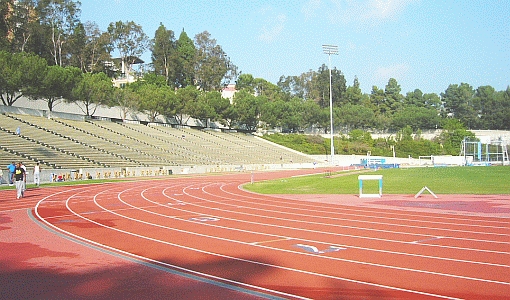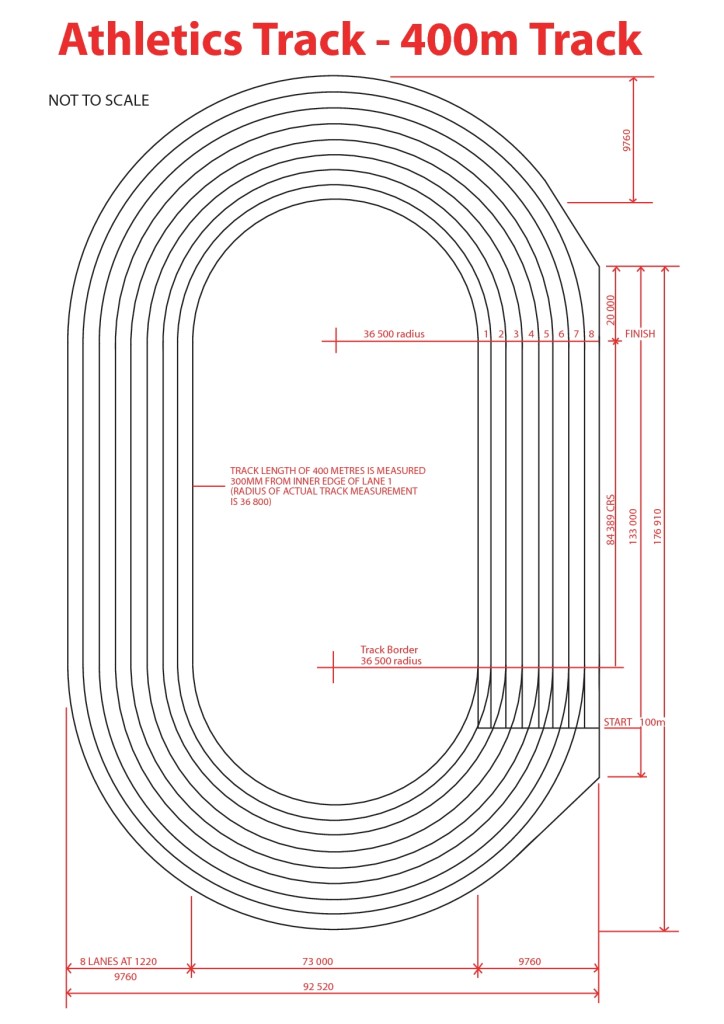Los Angeles is the sports capital of the world for many athletes both professional and recreational. Where else can people hike, mountain bike, surf, and play beach volleyball all within a few mile radius? And nearby is the elite UCLA track at Drake stadium that is known around the world. On any day of the week an array of entertainment and sports stars gather there for workouts.
The track is open and available to all. That’s always a shock to people from the East who cannot just walk right onto a high-level collegiate sports field. Many athletes from track and field to basketball to football have made it their home track whenever they are in town or whenever they need to train seriously. Because a group of former or current top athletes can always be found there, it offers the motivation for a tough workout.
And yet many plodders, joggers and walkers come to the track, too. If you plan to go to a track for a workout, learn your way around first. Lanes are numbered from the inside out. Lane 1 is closest to the grassy infield. Lane 8 (or 9 depending on the track) is on the outside. Most tracks are no longer the old 440 yards around (a quarter of a mile) but have been converted to the international distance of 400 meters. To run a mile, you have to go 11 yards more than four laps. After you’ve familiarized yourself with the general layout of the track – where the long jump runway and various pits are located – it’s time to go over the rules of the road.
- Never jog in lanes one, two, or three. These lanes are reserved for athletes who are running timed intervals. So to warm up by running slowly, you must use the outside lanes or the grassy infield.
- Occasionally you may hear a coach call out, “Clear lane five… runner coming in lane five!” Use common sense – clear lane five. Check to be sure you haven’t drifted from lanes six or seven into five.
- Never step into lane one from the infield without looking first for oncoming traffic. Runners in full flight can instantly appear, so look again, even if you just looked a few seconds earlier. Of course, you should always look for traffic before stepping from outside the track into lane eight, but generally the fastest runners are in lane one and need constant surveillance.
- Don’t cross the infield – “No Man’s Land” without first looking at the javelin runway and discus circle. If either area is in use, go around the track. Likewise, don’t walk across a long jump or pole vault runway without first looking to the head of the runway for athletes in motion or preparing to start running.
- When you are ready to run a timed interval, note the speed of other runners in lane one. Try to begin running with enough distance so that you won’t overtake anyone and no one will overtake you. Step out of lane one immediately after crossing your finish line.
- If you are in the middle of an interval and see that you will soon overtake a runner in front of you, yell “Track” clearly and firmly before you reach the potential trouble spot. Knowledgeable runners will respond to your command by making way for you. If the runner doesn’t move, you may have to add, “Clear lane one!” Usually you’ll be able to clear your path with these commands rather than have to slow down or detour around the slower runner.
- Don’t wear headphones or talk on a phone during a track workout. Those distractions may make the miles go by when roadrunning, but you need to listen when you’re on the track. You need to be aware of what’s happening very quickly around you. Blocking your hearing while keyed-up athletes speed past you is dangerous for everyone.
Once you’ve learned to function smoothly within the normal traffic flow of a busy track, you’ll be surprised to see how much better your workouts can be. You can focus on your times and distances and even enhance your performance in the upbeat track atmosphere. So go enjoy the cushioned surface of your local track. Or if you live near Westwood CA, come by early on a Wednesday morning to join my weekly UCLA track workout with friends.
Lynda Huey, M.S., founder of CompletePT and Huey’s Athletic Network, is a former athlete and coach whose own injuries led her into the water to find fitness and healing. She was educated at San Jose State University where she starred on the track and field team during its golden years.


